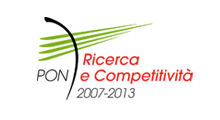Results to date: 08/09/2014
SEGUI IL PROGETTO
The project expects to create a system capable of safeguarding the forests and parks, the protection of which represents a tool to contain CO2 emissions. In particular in the Puglia region, one of the Convergence Regions, the same project can be used for the protection of centennial trees, especially olive trees, in relation to which could constitute a valid support for the registry, indicating for each tree, the georeferenced coordinates with the possibility, furthermore, of being able to verify potential cuts or extirpations of said trees.
The same system, furthermore, would provide monitoring for the possible prevention of fires in parks and woods in as far as it would manage early on to communicate potential anomalous temperature increases or environmental conditions predisposing to the eruption of fires diversified in relation to the various types of forest.
The project was born of the necessity to be able to monitor the georeferenced position of the trees with the aim of control and to avoid the unauthorised destruction of the same, the climatic conditions of the microclimate, and the possible eruption of fires.
The project envisages a network of autofuelled sensors applied one on each tree, which give the possibility of verifying through an application or web-application, the geolocation of every single plant seen on a small map (openstreetview or google maps), the temperature of the area concerned and potentially other parameters relating to the condition of the connected plant, such as surrounding humidity and the potential presence of flames or hot bodies in movement in the vicinity.
The network of sensors will communicate with wireless technology via broad beam, which will also allow the exchange of information between the various network nodes. The results will subsequently be sent, through a gsm gateway, to the web application which will monitor the conditions of the territory.
The information transmitted by each node concern in the initial phase intended for this project utilise the following sensors:
- Positioning Sensor (GPS);
- Temperature Sensor;
- Humidity Sensor;
- Infrared and/or presence sensor.
The network of sensors must be able to be interfaced with an application or web-application which visualises the information taken from the sensors. Hence, the necessity of visualising on a digital plan the structure of the forest-park taken into consideration, the position of the relevant plants, the temperature, the humidity factor, the presence of things or people in the vicinity, the major risk zones (also based on the type of trees planted and the health status of same).
Advantages for the public sector:
- Management of pruning, precise identification of trees intended for pruning or removal;
- Identification of hotbeds or sectors in which the danger of fires is greater;
- Geolocalisation of centennial plants (which is linked to the registry of the centennial olive trees).
Advantages for the private sector:
- Identification of objects or people in movement in unauthorised territories (e.g. fruit-olive-vine, private parks, etc.)
The initial project envisages three macro phases:
- Production of the web-application for the geolocalisation of sensors on the map;
- Production of the prototype of the sensor node and evaluating the transmission characteristics of the network (duration 9 months)
- Re-engineering of the prototype to productive ends and completion of the software on the basis of new changes (duration 18 months)
Currently phase 1 is complete; the prototype of the web application is available (beta phase) to test with information sent by the sensor nodes (duration 9 months).
The application is waiting to be put on the internet with a private server.
This consists mainly of an application which allows the vision of the sensor nodes on a map with added information.
Subsequently it will be possible to carry out research focused on studying the climatic trend of the zone concerned.
Phase 2 (duration 18 months) is still in development; Communication with the sensors is in the testing phase as well as the choice of an active (gps) or passive (triangulation with other nodes) localisation system to lower the cost of the final sensor.
Parallel the analysis of contracts for provision of the server is going ahead, as well as analysis of other test apparatuses and the applicable CAD necessary for the production of the final product.
For more details on the project objectives go to the presentation (italian version .pptx)






 Storify
Storify twitter
twitter YouTube
YouTube